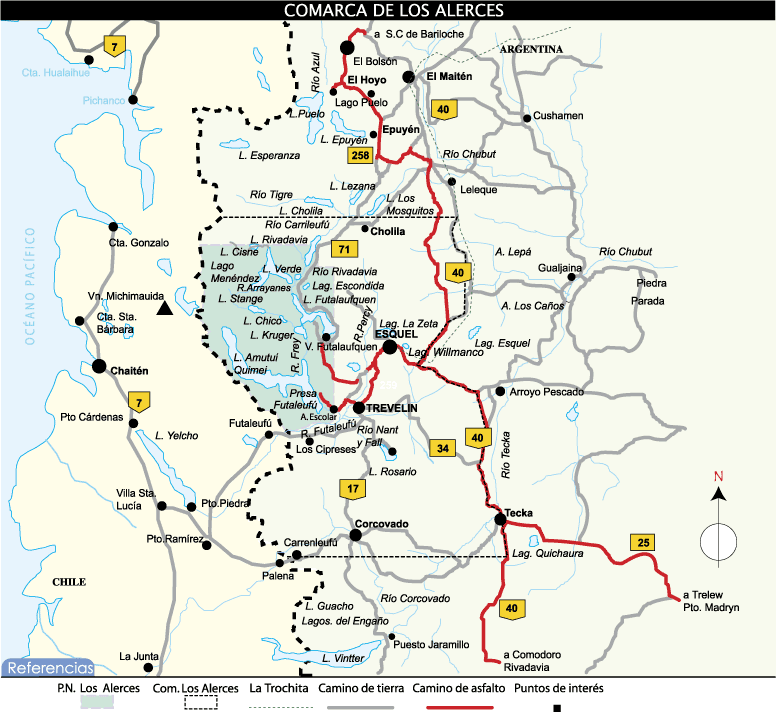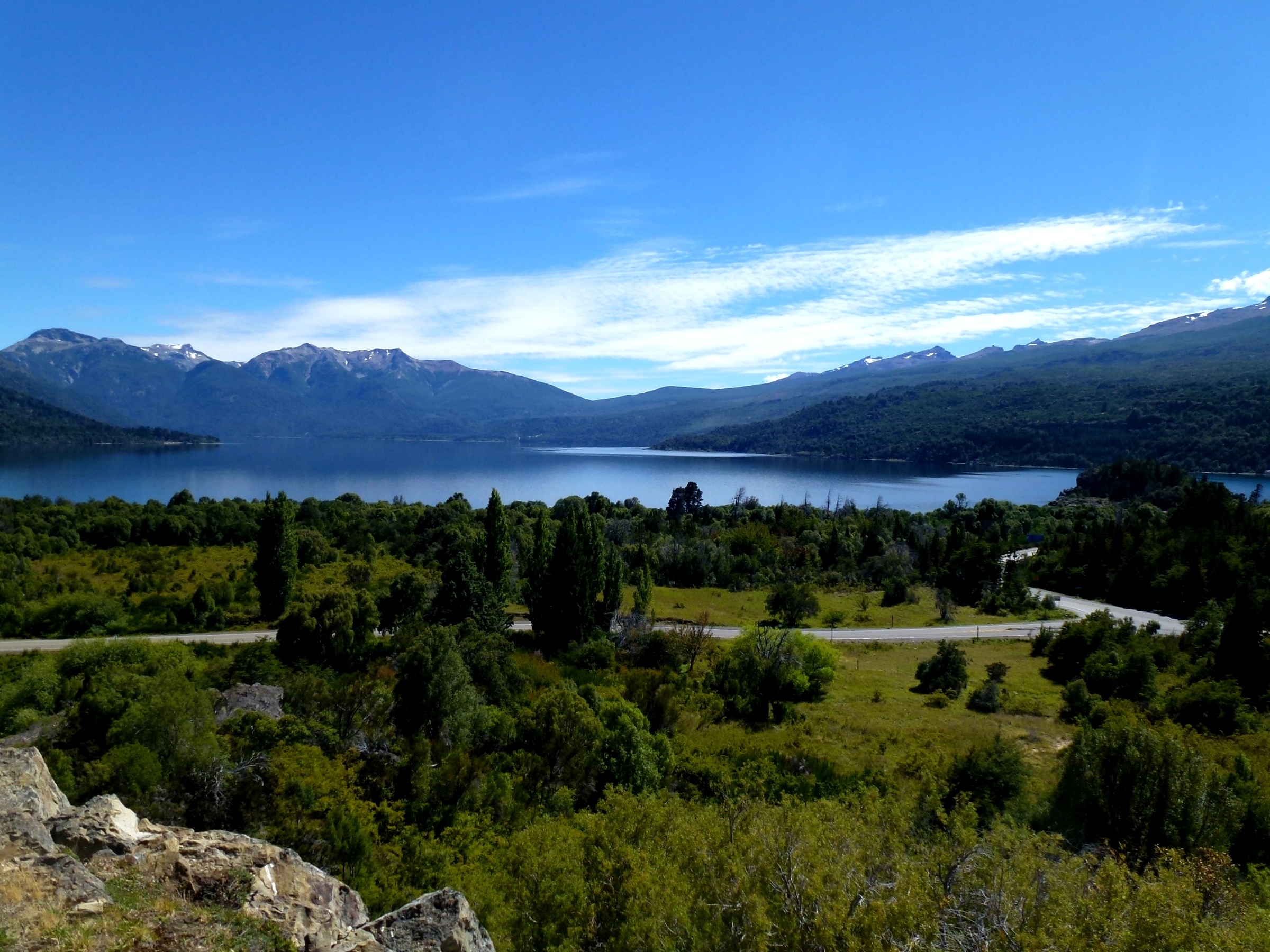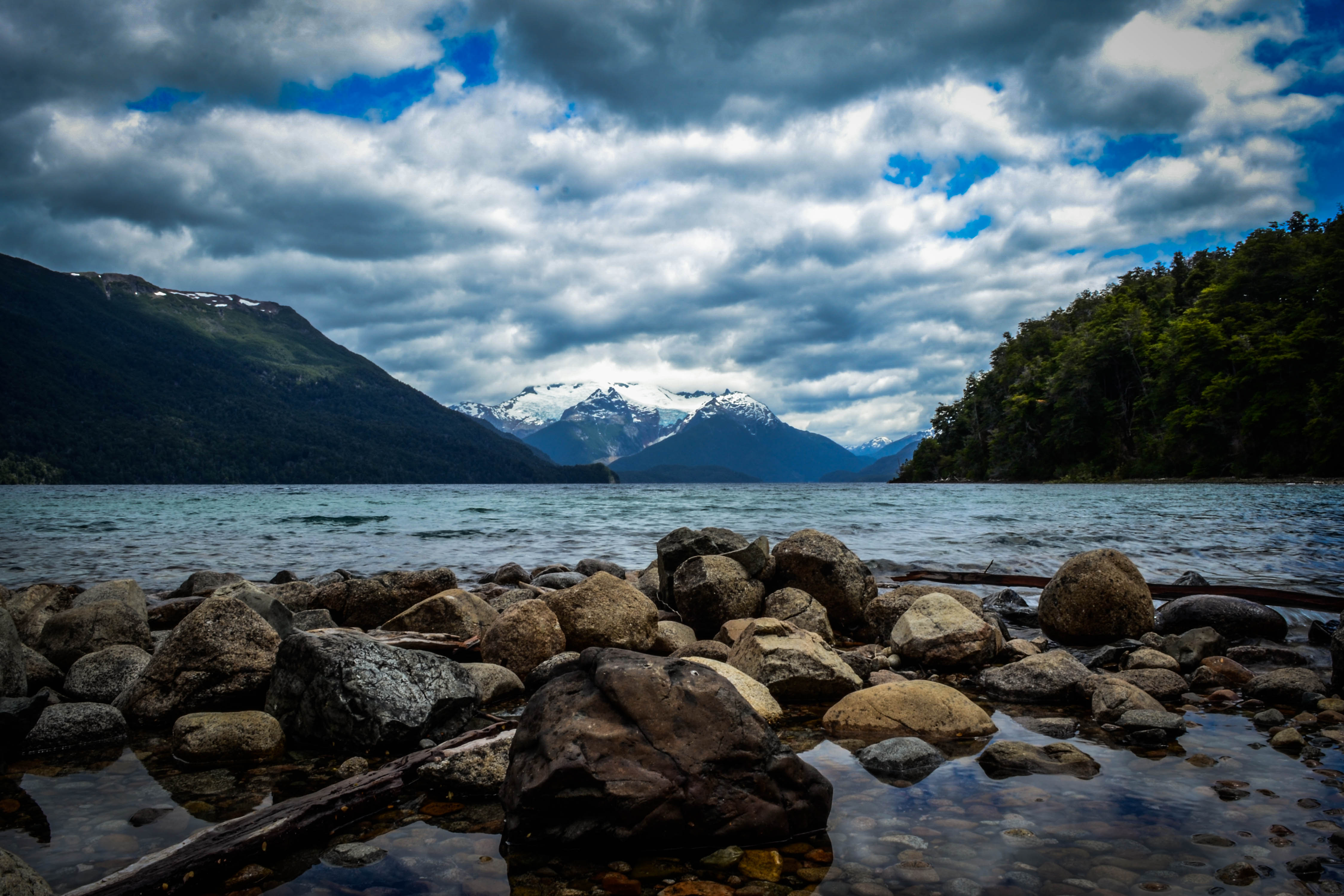Los Alerces National Park on:
[Wikipedia]
[Google]
[Amazon]
 Los Alerces National Park ( es, Parque Nacional Los Alerces) is located in the
Los Alerces National Park ( es, Parque Nacional Los Alerces) is located in the
 Designated a
Designated a

 Los Alerces National Park consists of two parts: the formally declared national park of and the adjoining Los Alerces National Reserve of . Almost all the development in the park is in the national reserve. A buffer area wide surrounds the three sides of the park which do not border on Chile.
Los Alerces National Park is shaped like a rough rectangle, extending approximately north to south along the border with Chile and east to west. All of Los Alerces National Park is in the drainage basin of the
Los Alerces National Park consists of two parts: the formally declared national park of and the adjoining Los Alerces National Reserve of . Almost all the development in the park is in the national reserve. A buffer area wide surrounds the three sides of the park which do not border on Chile.
Los Alerces National Park is shaped like a rough rectangle, extending approximately north to south along the border with Chile and east to west. All of Los Alerces National Park is in the drainage basin of the
 Los Alerces National Park ( es, Parque Nacional Los Alerces) is located in the
Los Alerces National Park ( es, Parque Nacional Los Alerces) is located in the Andes
The Andes, Andes Mountains or Andean Mountains (; ) are the longest continental mountain range in the world, forming a continuous highland along the western edge of South America. The range is long, wide (widest between 18°S – 20°S ...
in Chubut Province in the Patagonia
Patagonia () refers to a geographical region that encompasses the southern end of South America, governed by Argentina and Chile. The region comprises the southern section of the Andes Mountains with lakes, fjords, temperate rainforests, and g ...
n region of Argentina
Argentina (), officially the Argentine Republic ( es, link=no, República Argentina), is a country in the southern half of South America. Argentina covers an area of , making it the second-largest country in South America after Brazil, th ...
. Its western boundary coincides with the Chile
Chile, officially the Republic of Chile, is a country in the western part of South America. It is the southernmost country in the world, and the closest to Antarctica, occupying a long and narrow strip of land between the Andes to the east a ...
an border. Successive glaciations have molded the landscape in the region creating spectacular features such as moraines, glacial cirques and clear-water lakes. The vegetation is dominated by dense temperate forests, which give way to alpine meadows higher up under the rocky Andean peaks. A highly distinctive and emblematic feature is its alerce forest; the globally threatened alerce tree is the second longest living tree species in the world (>3,600 years). The alerce forests in the park are in an excellent state of conservation. The property is vital for the protection of some of the last portions of continuous Patagonian Forest in an almost pristine state and is the habitat for a number of endemic and threatened species of flora and fauna.
Alerce trees
 Designated a
Designated a World Heritage Site
A World Heritage Site is a landmark or area with legal protection by an international convention administered by the United Nations Educational, Scientific and Cultural Organization (UNESCO). World Heritage Sites are designated by UNESCO for h ...
in 2017, the park was created in 1937 to protect forests of alerce trees, called ''lahuán'' by the Mapuche people, and other examples of the flora of the Patagonia
Patagonia () refers to a geographical region that encompasses the southern end of South America, governed by Argentina and Chile. The region comprises the southern section of the Andes Mountains with lakes, fjords, temperate rainforests, and g ...
n Andes. The National Park has the largest alerce forest in Argentina. Alerce is often compared in appearance to the Sequoia trees of the United States, reaching a very large size. It is one of the longest-living tree
In botany, a tree is a perennial plant with an elongated stem, or trunk, usually supporting branches and leaves. In some usages, the definition of a tree may be narrower, including only woody plants with secondary growth, plants that are ...
s in the world; some in Chile are 3,600 years old. The alerce grows very slowly and belongs to the family Cupressaceae (cypresses). The alerce is restricted to a small range in Chile and Argentina and the species is endangered due to exploitation of the tree for lumber.
The best-known alerce forest in the park, reachable by boat and often visited by tourists, is at a boat dock called Puerto Sagrario at the northern end of Lake Menéndez. The largest known alerce tree in Argentina is located there. It is tall, in diameter, and 2,600 years old. Regular tours visit the forest. Taller and larger alerce trees are believed to exist on the southwestern arm of Lake Menéndez, but access to that area is restricted.
The virgin alerce forests in the park cover an area of on the two arms of Lake Menéndez and the upper part of Amutui Quimey Reservoir, and along the streams feeding into those lakes.
Description

 Los Alerces National Park consists of two parts: the formally declared national park of and the adjoining Los Alerces National Reserve of . Almost all the development in the park is in the national reserve. A buffer area wide surrounds the three sides of the park which do not border on Chile.
Los Alerces National Park is shaped like a rough rectangle, extending approximately north to south along the border with Chile and east to west. All of Los Alerces National Park is in the drainage basin of the
Los Alerces National Park consists of two parts: the formally declared national park of and the adjoining Los Alerces National Reserve of . Almost all the development in the park is in the national reserve. A buffer area wide surrounds the three sides of the park which do not border on Chile.
Los Alerces National Park is shaped like a rough rectangle, extending approximately north to south along the border with Chile and east to west. All of Los Alerces National Park is in the drainage basin of the Futaleufú River
The Futaleufú River, located in northern Patagonia, is one of the premier whitewater rivers in the world. One of only two rivers to cross the 5,308 kilometer Chile-Argentina border, the Futaleufú headwaters can be found in the glacial snow mel ...
, although the river is called by several different names during its course in Argentina. A chain of lakes separated by short courses of turbulent river characterize the park. Lake Rivadavia is the beginning of the chain. The outflow from Lake Rivadavia is called the Rivadavia River which flows into the much smaller Green Lake. The outlet from Green Lake is called the Arrayanes River, which after receiving the outflow from Lake Menéndez continues on to Futalaufquen Lake. Below Futalaufquen Lake is Kruger Lake and the Frey River which flows into Amutui Quimey Reservoir, an artificial lake. The river known as the Futaleufú emerges below Amutui Quimey reservoir and becomes the southern boundary of the National Park. Scattered around the mountains and valleys of the park are a number of smaller lakes and streams.
The highest point in the Los Alerces National Park is Cordon de las Pirámides, in elevation. The lowest point in the park is about where the Futaleufú river crosses into Chile.
Climate
The lower elevations in Los Alerces National Park are classified as Oceanic climates, denominated Cfb, or humid continental climates, Dfb, in theKöppen climate classification
The Köppen climate classification is one of the most widely used climate classification systems. It was first published by German-Russian climatologist Wladimir Köppen (1846–1940) in 1884, with several later modifications by Köppen, notabl ...
system. Moisture-laden clouds from the Pacific Ocean
The Pacific Ocean is the largest and deepest of Earth's five oceanic divisions. It extends from the Arctic Ocean in the north to the Southern Ocean (or, depending on definition, to Antarctica) in the south, and is bounded by the contin ...
strike the Andes on the Chilean-Argentine border and produce up to of precipitation annually, mostly in the form of rain at lower elevations and snow at higher elevations. Eastward from the crest of the Andes, in a rain shadow, precipitation decreases rapidly, falling to about at the eastern edge of the park. Temperatures in the park range from cold to moderate. Freezes can occur in any month of the year. At the park headquarters at one of the lowest elevations in the park, the warmest month is January with average daily maximum and minimum temperatures of 24° celsius (75° fahrenheit) and 8° celsius (46° fahrenheit). The average temperatures in July, the coldest month, are 7° (45° fahrenheit) high and -1° (30° fahrenheit) low. Average temperatures decline with altitude. Timberline is about above which is bare rock, permanent or semi-permanent snowfields, and Torrecillas glacier between the two arms of Lake Menėnendez.Google Earth
In the west of the park, there is high rainfall and Valdivian temperate rain forests below the higher elevations of the Andes. Much of the rest of the park is Patagonian forest similar to the Lanín and Nahuel Huapi National Park
Nahuel Huapi National Park () is the oldest national park in Argentina, established in 1934. It surrounds Nahuel Huapi Lake in the foothills of the Patagonian Andes. The largest of the national parks in the region, it has an area of , or nearly ...
s, with coihue
''Nothofagus dombeyi'', Dombey's beech, coigue, coihue or coigüe (from Mapudungun ''koywe'') is a tree species native to southern Chile and the Andean parts of Argentine Patagonia. It is a fast-growing species that can live in a wide range of ...
s and lenga. Arrayán (''Luma apiculata'') trees can be seen along the Arrayanes river.
Although there is no true dry season, precipitation is heaviest in the southern hemisphere winter months of July through August.
Development and tourism
A hydroelectric dam, providing energy to industry inPuerto Madryn
Puerto Madryn (; cy, Porth Madryn), also known as ''Madryn'', is a city in the province of Chubut in Argentine Patagonia. It is the capital of the Viedma Department, and has about 93,995 inhabitants according to the last census in 2010.
Puer ...
, has created the large Amutui Quimey Reservoir, which empties into the Futaleufú River
The Futaleufú River, located in northern Patagonia, is one of the premier whitewater rivers in the world. One of only two rivers to cross the 5,308 kilometer Chile-Argentina border, the Futaleufú headwaters can be found in the glacial snow mel ...
which flows on to Chile.
There is good walking and fishing in the park, and boat trips on the lakes. The Torrecillas glacier can be seen from tour boats on Lake Menéndez.
See also
* Lake Menéndez * Lake RivadaviaFootnotes
{{Authority control National parks of Argentina Biosphere reserves of Argentina Protected areas established in 1937 Protected areas of Chubut Province World Heritage Sites in Argentina Valdivian temperate rainforest